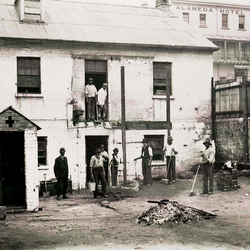 |
 |
ARCHIVAL RESEARCH
Australia was founded approximately two hundred years ago and from the first day of settlement a huge resource of documents has accumulated that describes and helps us understand how the nation and its people developed and lived. Maps, photographs, letters, records from government departments, land titles, wills and newspapers are some of the many sources of archival information that can be used to investigate and understand an historic site. Archival research and analysis is the basic tool used to identify and evaluate an archaeological site, understand how a specific building has developed or document the evolution of a community. A thorough understanding of how a place, building, site or community has come into being and changed over time is fundamental to determining how significant is that place. Understanding its significance provides the parameters for development, what actions may or may not be allowed there and what strategies are required to manage the material evidence of past occupation and development. All authorities responsible for cultural assets require, as a first step in heritage projects, research sufficient to understand the significance of a place or item, its context and the influences that have gone into its development. Every single one of the several hundred historic site and place projects undertaken by CRM has been supported by our historic research and analysis including oral histories. These projects have included over 150 individual histories of specific places, a thematic study of defence sites for the Australian Defence Force (1995) and a study of convict stockades for NPWS (1987). Examples of specific projects include: Historical Analysis of the Chief Secretary’s Building, Sydney for a conservation plan (Minister for Planning 1994) Newington Armaments Depot as part of a heritage assessment to support the Olympic site development (Department of Defence 1996) 95-101 George Street Parramatta as part of an archaeological investigation (Leighton Properties 2004).
|











